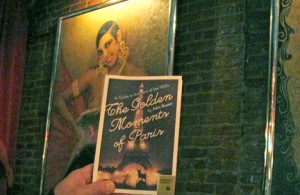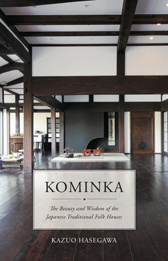
Group portrait of American and European artists and performers in Paris: Man Ray, Mina Loy,
Tristan Tzara, Jean Cocteau, Ezra Pound, Jane Heap, Kiki de Montparnasse, c. 1920s
Paris, especially the Paris between the two world wars, continues to resonate with many people around the globe. The city has had many golden ages but probably none as famous as the 1920s: the Paris of the Lost Generation. This is the Paris of Hemingway and the Fitzgeralds, of Gertrude Stein and so many others, when the City of Light was a veritable living museum of cultural activity: literature, music, art, dance. It was a time when surrealism and cubism flourished, when small presses flourished and when conversation flowed in the city’s countless cafes. Cafes, in fact, were the places not only to meet but also, notes the book’s author, John Baxter, “to gossip, to plot, to seduce. …” A few even wrote in them (Hemingway composed some of his short stories and a portion of “The Sun Also Rises” in his famous haunts). Given the rich literary history of 1920s Paris, it seems only right that Baxter devotes an entire chapter to Sylvia Beach (whom he calls “the first lady of Bohemia”) and her famous bookstore, Shakespeare and Company (its modern film equivalent appears in Richard Linklater’s “Before Sunset” and Woody Allen’s “Midnight in Paris”). Beach, the American daughter of a Presbyterian minister, not only founded and ran the English-language bookstore, she also published James Joyce’s controversial novel “Ulysses” — because of its risque subject matter, publishers in the U.S. and Britain steered clear of it. Another chapter is devoted to the bob. Women who cut their hair, Baxter reminds us, were participating in a scandalous act of rebellion, for to bob one’s hair “expressed contempt not only for style but the entire social order.”
Other chapters are devoted to Josephine Baker’s hot jazz moves, opium and absinthe, American songwriters in Paris (including George Gershwin and Cole Porter) and the little-known yet fascinating Harry Crosby, a movie-star handsome self-destructive publisher obsessed with death. Some, like Beach, found him delightful; others, not so much (Edith Wharton, for one, dismissed him as a “sort of half-crazed cad.”)
To bring it all into the modern day, Baxter concludes with four walking tours.
For more information, check out The Golden Moments of Paris!
 MUSEYON BOOKS Smart City Guides for Travel, History, Art and Film Lovers
MUSEYON BOOKS Smart City Guides for Travel, History, Art and Film Lovers



